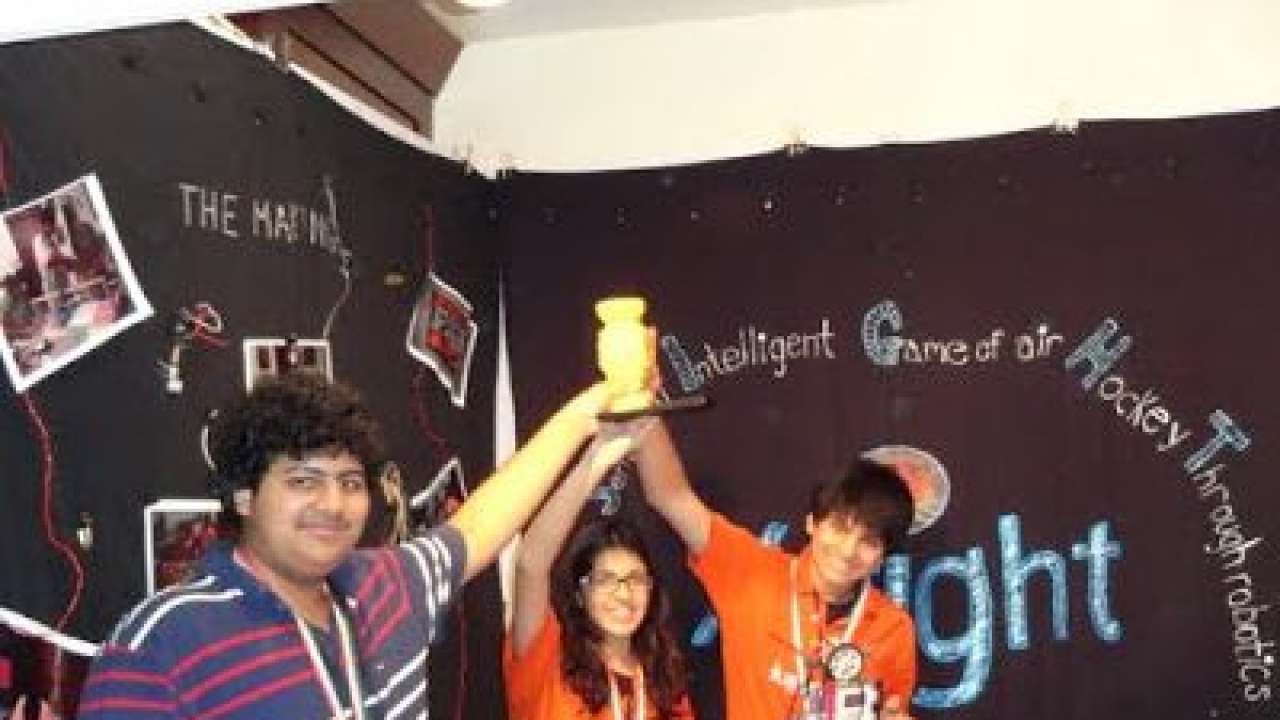
Hemani Kalucha won the Indian Robot Olympiad 2012 for her project ‘AR-Jen’ - The Robot Arjun. In the Mahabharata, Arjuna's story relates a great accomplishment in archery which, before Arjun, was achieved only by the Gods. Robotics enthusiasts thrive on replicating such accomplishments to advance the field of robotics. This feat was accomplished by Hemani before heading to the World Robot Olympiad.
In addition to winning at the Indian Robot Olympiad, Hemani's team also won the technical excellence award at the World Robot Olympiad for the same project at Malaysia in 2012. But it's not the robot's technicality that amazes people, it's the cause. Hemani's bot is a recreational game of Air Hockey for the Visually Impaired. When I got a chance to interview Hemani this is what she had to say -
Krishna: Tell us about your recreational bot for the visually impaired
Hemani: My team and I created a robotic system that would enable the visually impaired to play air hockey, a common and fun game that we all enjoyed. Our robot consisted of three systems - a puck tracker, the opponent's hand tracking system and cyborg - a robotic arm that can play a visually impaired person. The puck tracker replicated the movement of the puck on the board in real time on a smaller surface underneath the visually impaired person's hand by a colour zoning system on our board. The opponent's hand tracking system consisted of a set of 6 vibrating motors on top of the visually impaired person's hand that told them where the opponent's hand was so that they could aim and shoot better.
Krishna: Have you ever used robotics to aid your day to day life?
Hemani: I think robotics has immensely improved my sense of analytical thinking - I am able to understand math and physics much better. Feeding on experiences which my projects have given me, I have learned to research more thoroughly and many technical programming and building skills. The projects involve writing technical reports and making concise presentations - both of which I use at school and in life. It has taught me most importantly, how to work as a team with different people which I think is a very useful skill. The whole World Robot Olympiad experience (WRO) has been an entirely fascinating journey, learning about different cultures, interacting with new people, and enhancing my knowledge with new project ideas. A great deal of this can be credited to my coach, Ms. Asha Sundararajan.
Krishna: What role do you see robotics playing in your life?
Hemani: My dream is to become an astronaut and work for NASA. I would love to be part of a project where I could integrate robotics into space exploration and find a greater use for this amazing technology to further our knowledge of the universe.
Krishna: What tools does your typical robotics tool-kit consist of?
Hemani: I go to a robotics centre known as Children's Technology Workshop. We work with a lego Mindstorms NXTG kit which contains a micro-controller - the NXT, connecting pieces, different sized gears, servo motors and an assortment of beams. We program on a software called NXTG specifically suited for this kit and can download the program on to the micro controller via a USB download wire.
Krishna: What is your opinion on Artificial Intelligence?
Hemani: It is a very interesting field. I think that it will take human progress to the next level. The ultimate accomplishment will be when robots and humans will work together to create the perfect humanoid and reinvent skill as we know it. It is a unique combination of math and physics and intrigues me immensely.
Krishna: What is your typical week like?
Hemani: Being in the 11th grade, I have a lot of work to do. However thanks to being in a school like Dhirubhai Ambani, I am exposed to a lot of other interesting activities. Last week, I was on a social service trip to a village we have adopted outside of Mumbai. I also enjoy being part of the student council of my school which has helped me hone my leadership and organizational skills. My week usually consists of studying, swimming, helping out in the school magazine and hanging out with my friends.
Krishna: Why a bot for the visually impaired and not people with any other disability?
Hemani: Humans tend to depend on vision a lot more than their other senses. The deprivation of vision therefore is the most devastating. When my team and I (consisting of three people, arvind ranganathan and nikeet dharia form ecole mondiale and me) were doing research for our project, we found that humans share three common needs - food, shelter and recreation. After visiting the happy home and school for the blind and the national association for the blind, we observed that people had invented a lot of gadgets to fulfill the first two needs of the blind, but no one had focused on recreation - presuming it to be childish. However, recreation is equally important for mental health. What we learned from visiting the institutes was that there is a severe lack of innovation for recreation for the blind and we thought our robot could be most helpful in improving this gap.
Krishna: Do you believe that you will use your skills for the common benefit of people?
Hemani: I hope that when I do fulfill my dream of working at NASA, the projects we work on do change the lives of the people here on Earth.